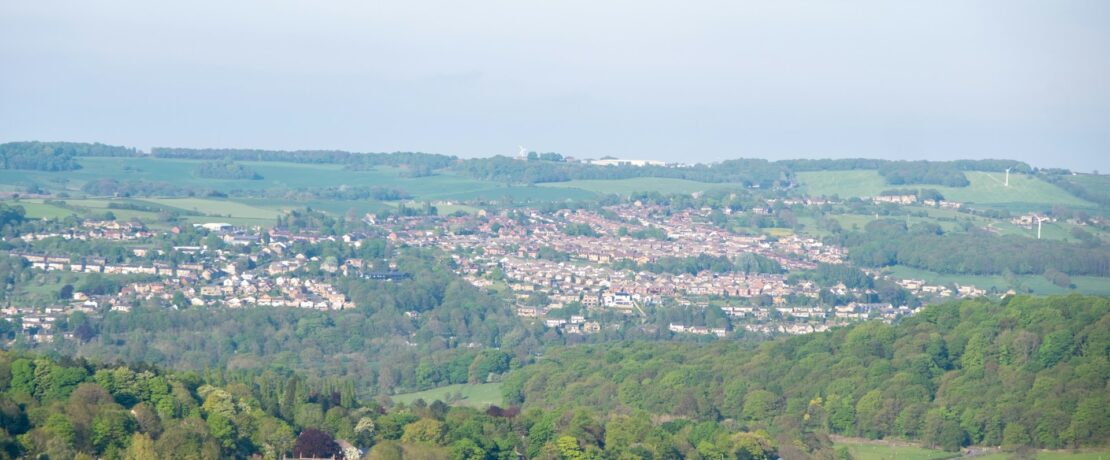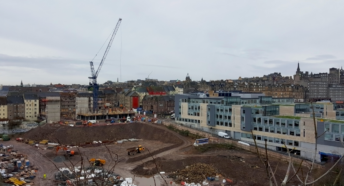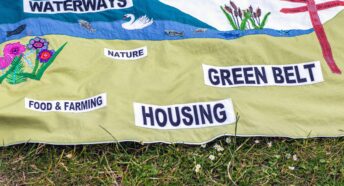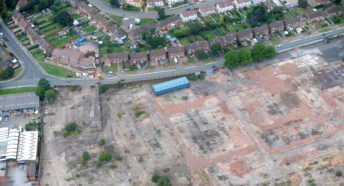Safeguarding the countryside: the critical role of the Land Use Framework
The countryside faces numerous challenges, from contentious development policies to the struggle for balanced growth. The Land Use Framework consultation presents an opportunity to reshape how we manage land. CPRE’s CEO, Roger Mortlock, highlights the need for strategic, informed, and sustainable land use decisions.
It’s been a bumpy start to the year for the countryside. The mantra of growth at any cost dominates parts of government. Again, newts and bats are in the firing line. And the polarisation between builders and blockers is needless, driving people even further apart.
Devolution proposals often seem to favour urban over rural areas. They divide the country without appreciating our countryside’s uniqueness. There will need to be changes in our countryside, that’s without doubt. But those who live in, work in, or just love the countryside, should have a voice. Failing to take them on the journey feels like divisive and dated politics.
Yet alongside this, January ended with an announcement that felt altogether different, with the publication of the consultation on the Land Use Framework. Much as I’ve tried, it’s a topic that’s hard to inspire a feisty discussion on a night out, but it should do. How we use land better is the theme that underpins all the hot discussions at CPRE at the moment, so a framework that lays out how we should do that more strategically is welcome.
There is a simple truth about land – it’s finite. And put even more starkly, if we carry on as we are with all the myriad plans that depend on land (from restoring nature to producing food, and from homes to new infrastructure) we will soon run out. Classical economists recognised that land is one of the pre-requisites for growth, alongside entrepreneurship, capital and labour. So strange that too often it is so carelessly deployed. Whether it’s solar farms on prize farmland while warehouse roofs remain bare, or new, car dependent housing estates on greenfield sites devoid of infrastructure, decisions like this have little regard for the preciousness of land. It may not be what the government intended, but in the rush to build at any cost, it’s what we will get.
The consultation on the new Land Use Framework is an opportunity to frame the debate in a different way. It’s now live, so do contribute. The success should lead to better land use in the future. In five years, farmers and planning officers will make informed, sustainable land choices.
The risk is that not all uses of land are created equal and that in the rush to ‘build, build, build’ housing and infrastructure will trump other land uses. The restoration of nature, natural climate solutions, and landscape value may be secondary to new home targets. Spatial plans for energy and housing targets are already in development. The Land Use Framework must inform these plans to join up land use across government successfully.
How a land use framework operates is critical. At CPRE, we’re working on a project to identify tools that help people make better land choices. We will report on this during our centenary next year. Meanwhile, we’ll review existing mechanisms like Agricultural Land Classification, a system needing an overhaul. We’ll see how these mechanisms can support a land use framework.
Scale also matters, especially with boundaries set to change through the upcoming Devolution Bill. We want to do more work to explore at what scale it makes sense to join up thinking about land use – is that a county, a region, or more local? And how can local communities input into those spatial plans. The lazy shortcut is that local people don’t want any development, but faced balancing all the different demands on land, the result can be surprising and ultimately lead to better outcomes. Engage early enough with the right questions and I am confident that better solutions for where we put new homes, infrastructure and energy needs can be delivered alongside (and not sacrifice) land we need for food, nature and climate.
The prize for getting this one right is a big one – the end to thinking about land use in boxes and the chance to join up decision making. Yet the framework needs a purpose – it’s not just a process. Clearly for us, the critical purpose is safeguarding our countryside for future generations. Maintaining a thriving countryside, rich in nature, producing sustainable food, resilient in the face of climate change. Reviving and rethinking our towns and cities to maximise use of urban land, much as the late John Prescott did through his urban renaissance ambitions in the last Labour government. And making better decisions about land to protect what is special and loved.









